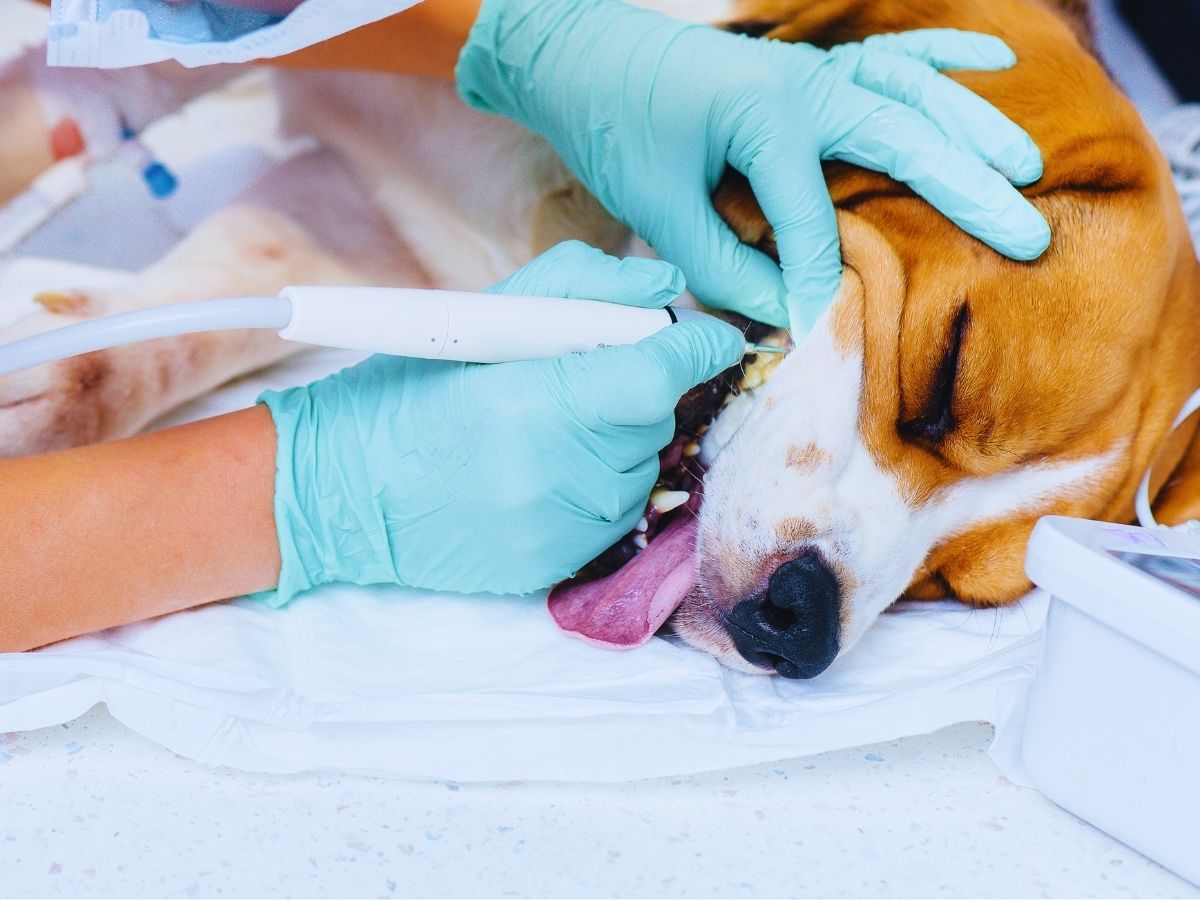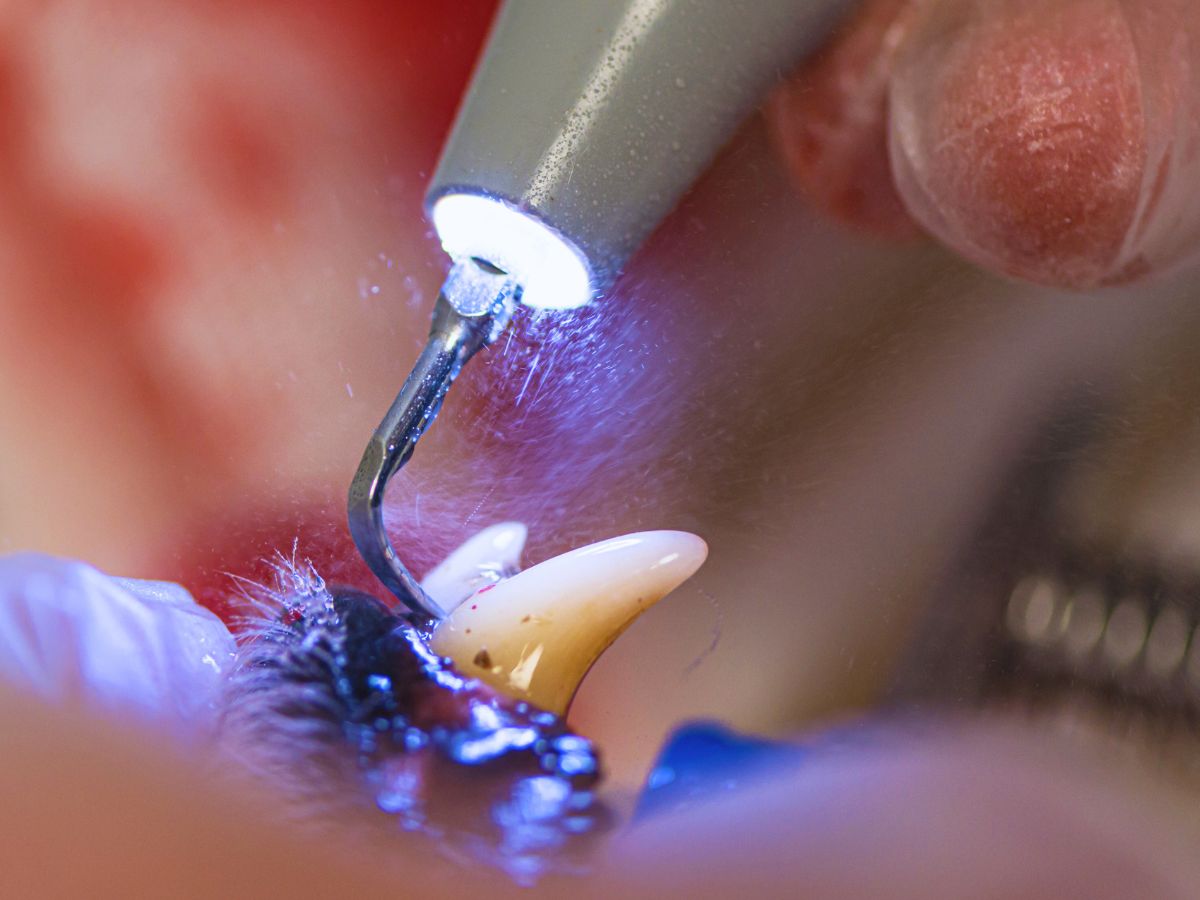Pet Dental: Is Skipping Anaesthesia Worth the Savings?
Article - 6 min read • Updated Feb 11, 2025
Medically reviewed by Dr. Arman Chen, BVSc (Qld.), BSc (Leic.)

No, it’s not worth it. In fact, choosing to skip anaesthesia could end up costing you more in the long run. Without proper teeth scaling at a veterinary facility, your pet is at a higher risk of serious gum and jaw infections, multiple tooth extractions, and even invasive surgeries to address advanced dental issues.
Why Does Pet Dental Cleaning Require Sedation?
Sedation is necessary for thorough and safe teeth scaling and polishing because pets won’t sit still with their mouths open. Without sedation, dental procedures will be highly stressful for your pet (and unsafe for your vet). It is also impossible for your vet to have a complete oral examination and proper cleaning.

Here’re 3 reasons why:
Deep Cleaning Below the Gum-line: Anaesthesia allows your vet to reach areas that are hard to reach, making sure it is a comprehensive clean that can prevent dental disease.
Dental X-Rays for Hidden Issues: Dental problems like abscesses or bone loss aren’t always visible. Anaesthesia keeps your pet still to take proper X-rays, helping your vet identify hidden issues before they worsen.
Safer Tooth Extractions: Damaged or infected teeth can be safely extracted without causing pain or stress to your pet.
Is Anaesthesia Safe for Pet Dental Procedures?
While no procedure is entirely risk-free, good veterinary practices can ensure that anaesthesia is relatively safe. At Gaia Vets, our team recommends blood tests before sedation and conduct close monitoring during the procedure itself.
Pre-anaesthetic blood test is done before sedation and presents the most updated information on your dog or cat’s health condition. This can be done on the same day as the dental procedure. With this report, your vet will evaluate and check to see if your pet’s organs, especially kidney and liver, are functioning well enough to handle sedation drugs, minimising the risks of complications if your pet has any underlying conditions.
During the procedure itself, your pet's heart rate, oxygen levels, and respiration are also closely monitored by the vet team.
Can Pet Dental Cleaning Be Done Without Anaesthesia?
Non-anaesthetic dental cleanings (NADs) can be marketed as a safer, cheaper alternative by some pet groomers. But are they effective? Not quite. Here’s why:
Surface Cleaning Only: Without sedation, the cleaning can’t reach below the gum-line, where serious dental issues start.
- No Extractions: Without sedation, it’s impossible to take X-rays or safely extract problematic teeth.
- Increased Stress and Risk of Injury: Your dog or cat can get anxious and move unexpectedly, increasing the risk of injury during the procedure.
While NADs may improve cosmetic appearance, they don’t provide the comprehensive care needed to maintain long-term dental health.
The Hidden Costs of Skipping Anaesthesia
Choosing pet teeth-scaling without sedation might seem like a cost-effective option, but it can lead to bigger expenses down the road.
“We have seen dogs and cats come in with serious tooth root infections. By then, they needed lengthy surgeries to clean out and remove the root abscesses and risk jaw fractures in the process.” - Dr. Arman Chen, BVSc (Qld.), BSc (Leic.)
Anaesthesia-based teeth scaling and polishing done annually (at least) provide a better solution, and can potentially save you from expensive complications and repeat visits.
Clearing Misconceptions About Pet Anaesthesia
Here are some concerns and common myths we hear about sedation:
“Anaesthesia is too risky for older pets.”
Senior pets may be at a higher risk but proper pre-screening via blood tests, and thorough evaluation of their health condition makes it safe for most healthy older dogs or cats.
“My pet’s teeth look fine, so no cleaning is needed.”
Dental disease often starts below the gumline, where it’s not visible. The only way to detect dental issues and fix them promptly is when your pet is properly sedated.
“Anaesthesia-free cleaning is just as effective.”
As mentioned earlier, NADs only clean the surface by removing plaque and do not address underlying dental issues.
Furthermore, teeth-polishing can only be done when your pet is relaxed and staying still. Polishing is necessary because it smoothens tooth surfaces and removes any micro grooves or dents that can trap food particles. It also removes bacteria that cause bad breath in your pet.
What to Expect After Anaesthetic Dental Cleaning
After the cleaning, your pet may experience mild side effects but should recover fully within 24 hours. You might notice:
Grogginess or Disorientation: This is normal and usually resolves within a few hours.
- Temporary Drop in Appetite: Soft food is recommended until your pet feels comfortable eating normally.
- Mild Swelling or Sensitivity: Slight discomfort is normal, but your vet may provide pain relief if needed.
Follow your vet’s care instructions to ensure a smooth recovery and proactively maintain your pet’s oral hygiene at home via regular brushing. Check out this step-by-step pictorial guide on brushing your pet's teeth!
Some FAQs About Anaesthesia and Pet Dental Health
Q: How often should my pet have a professional dental cleaning?
A: Most pets benefit from annual cleanings, but your vet can recommend a schedule tailored to your pet’s breed, age, and oral health.
Q: What signs indicate my pet needs dental cleaning?
A: Bad breath, yellow or brown tartar, red or bleeding gums, difficulty eating, and pawing at the mouth are all signs of dental disease. We advise not to wait until the symptoms become obvious, but to schedule dental procedures at least once a year! Learn more about the signs here.
Q: Can regular dental care at home reduce the need for teeth scaling?
A: Regular tooth brushing, dental chews, and prescription dental diets help slow down plaque buildup but even these can’t replace professional scaling and polishing.
Final Thoughts
Anaesthesia is essential for safe and thorough pet dental care. While NADs may seem cost-effective, they often lead to hidden costs and health risks. By opting for dental cleanings done by your vet and doing pre-anaesthetic blood tests, you ensure your pet’s safety and long-term health and well-being!
Tip: We advise pet owners who are worried about the risks of sedation to combine dental cleaning with other procedures. This can include sterilisation or health checks which require diagnostic imaging tools such as X-rays, CT Scan or Fluoroscopy.
If you have other concerns about putting your pet under sedation for pet dental cleaning, simply reach out to us! Book a consultation with us today!